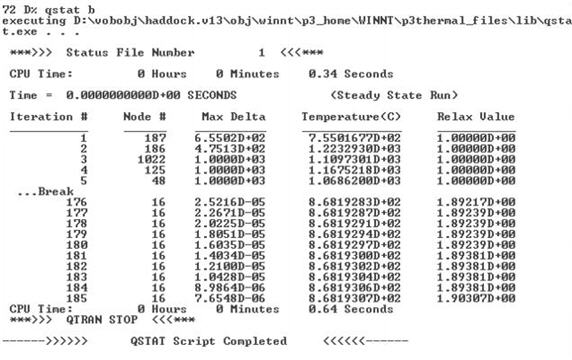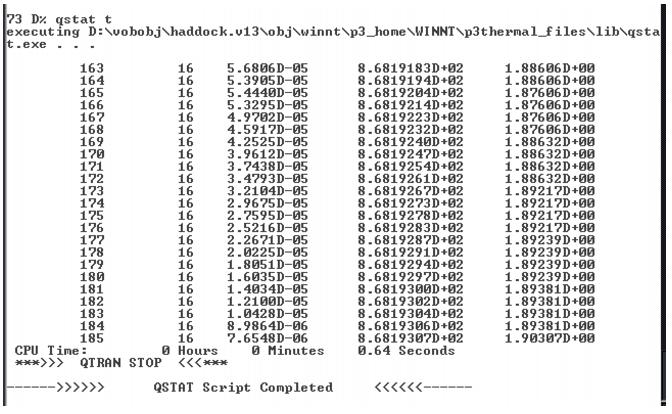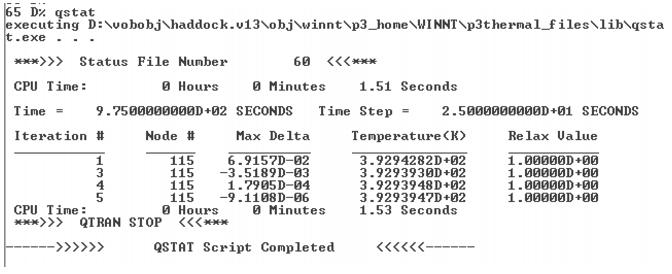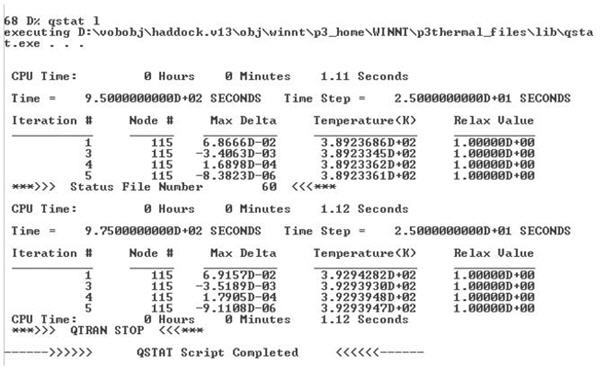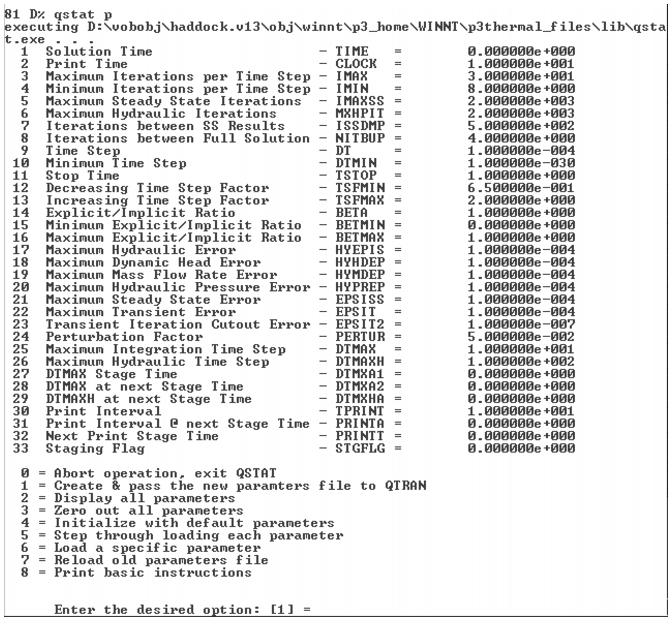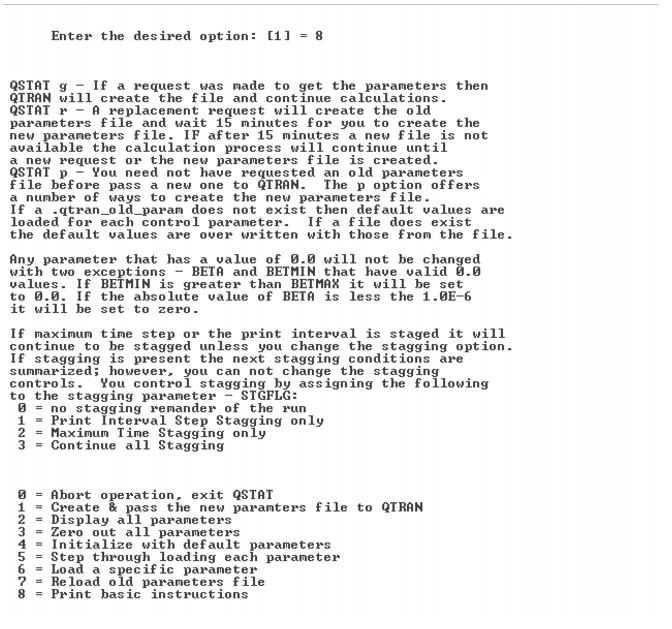XXXXXXXXXXXXXXXXXXXXXXXXXXXXXXXXXXXXXXXXXXXXXXXXXXXXXXXXXXXXXXXXXXXXXXXXXXXXXXXXXXXXXXXXXXXXXXXXXXXXXXXXXXXXXXXXXXXXXXXXXXXXXXXXXXXXXXXXXXXXXXXXXXXXXXXX''"> QSTAT - QTRAN STATUS
QSTAT is a stand alone program that can be executed while QTRAN is being executed or after execution is completed and will yield convergence information associated with the job. Communication between QSTAT and QTRAN is through a statbin file. To prevent both codes from having the file open at the same time they each will drop “hidden” files while it is processing the file. The other code can not access the file until the “hidden” file is deleted.
By typing qstat in the command line while you are in the directory where the job is being executed, a convergence history will be output. For the steady state case all iterations will be output to the current point in the calculation. If a transient analysis is being analyzed the iteration status for the current time step will be displayed. There are a number of command line option that can be used with qstat.
qstat b
The number of iteration can become large and if you are monitoring a job and would like to see the being and ending iterations the B option will limit the output and still the information output and limit it to about 25 lines. The information in the file includes the iteration number, the node ID of the node that had the
largest iterative delta temperature, the maximum iterative delta times its relaxation value, the node temperature and the new relaxation value for the node in question. The iterative delta time the relaxation value is the temperature change that will be applied to the node for the next iteration cycle. The QTRAN cpu time stamp is also included
qstat t
Rather than seeing some of the iterations at the being and end of the STATBIN file, the “t” option supplies a limited output for the latest iterations.
qstat c 15
If you wish to closely monitor a job, the qstat c option will provide the same output as the “t” option but will give a status report approximately every 1.5 minutes. It will repeat the process 10 times or until the job has finished. If you wish to get more than 10 outputs a second parameter can be specified that defines how many outputs are desired.
qstat s
For transient run you get the same report with the qstat or qstat with the “s” option; however, it only applies to the latest time step as shown below. The status file number is an indication as to how many time steps have been executed to this point. The time listed is the old time. The time variable is not advanced until a converged solution has been obtained thus the actual time represented in the following example is 10 seconds.
qstat l
At times it many be desirable to see more than one time point to observe the progression of the time step. The “l” option provides this capability. The STATBIN file will not be reset after each converged solution but will continue to put the convergence status in the file until it is turned off with a qstat s command at which time the STATBIN will revert to the default of a single time step per file. An example of multiple output is shown below.
qstat g
On long running jobs it could be desirable to do more than monitor the progression of the execution. The “g”, “p” and “r” option give the user the ability to interface with the job during execution and allows them to change several of the solution controls. The “g” option will interrupt a job and print a file with these alterable parameters to a file at that time. The execution will continue as soon as it has finished writing the old parameter file. The qstat g command can be issued prior to executing QTRAN if for example it was desired to get the parameters from a restart job.
qstat p
The qstat p allows one to edit an old parameters file or create a new one from default values. Execution of this command enables the user to get a help file with a summary of what can be accomplished with the dynamic series of qstat option.
The parameters that can be altered with the “p” option are listed below. While manipulation the parameters with this option the QTRAN problem will continue to run.
qstat r
The command qstat r is a combination of qstat g followed by qstat p. However, in this case the the QTRAN run will be interrupted for as much as 15 minutes wall clock time while you make the changes. After that time the QTRAN run will resume and you can continue modifying the parameters file and submit it later as the same as if you had issued the qstat p command.
